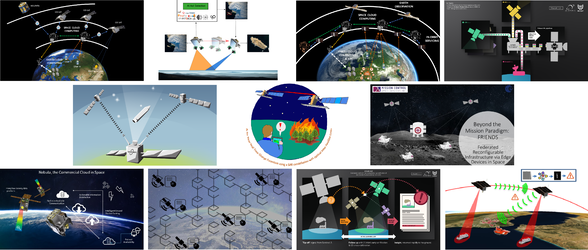ESA extends AI and cloud computing to space
Despite the rain trickling down the windows, the atmosphere in this room is bright. Twelve teams are gathered in ESA's ESTEC technology centre to explore how we can use the latest developments in AI and advanced computing to make satellites smarter. To make them more reactive, agile and independent.

Smart speakers. Autonomous cars. Smart heating. We are seeing these inventions making their way into our daily lives, and terms like 'the cloud', 'blockchain technology' and 'machine learning' are becoming more familiar. What if satellites could use existing technologies that collect data, make sense of it, and act accordingly – all without human intervention – to become smarter?
By nature, satellites take a long time to develop, whilst the digital revolution moves extremely fast on Earth. Compared to the processors that we use today on Earth, computers on board satellites are often outdated. What's more, the space industry has a history of being cautious, taking only necessary risks, and relying on proven and space-qualified hardware and computing techniques wherever possible.
The 12 teams have all spent six months exploring how to accelerate uptake of the latest AI capabilities in space, and are meeting to discuss their findings. Some researched how smarter satellites could directly improve our lives on Earth, for example by more effectively detecting methane leaks and managing disasters from space. Others looked at how smarter satellites could support more sustainable exploration of the Moon and make lunar rovers more independent.
"Lots of satellite applications require fast response, for example in disaster management or tracking moving objects," says Gabriele Meoni, an ESA research fellow who led the meeting. "If satellites could process data directly and independently in space, we could really improve how we handle these situations."
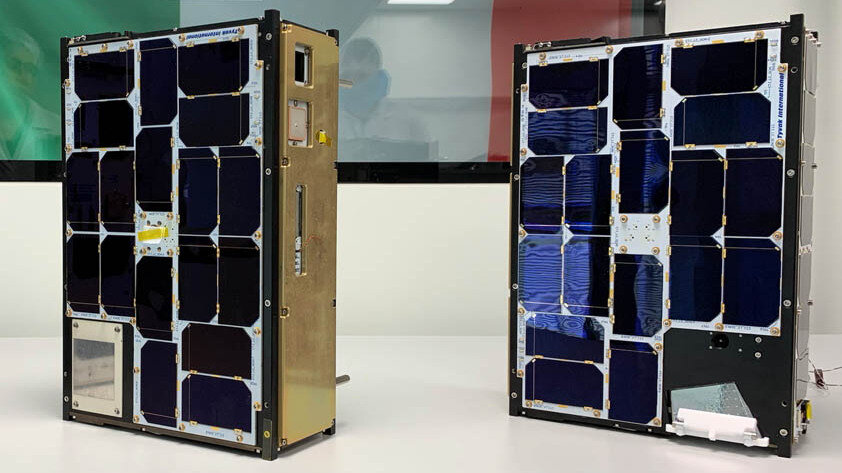
Gabriele continues: "I was really surprised by the outcomes of this suite of research studies. Some demonstrated that using AI you can get results comparable to current methods but much quicker."
Historically, satellites have been designed to collect lots of data and send it down to Earth, where engineers process the data to extract useful information. Gabriele adds: "I want to clarify that bringing AI on board satellites to process data is not a substitute to the current system, but rather a complement to it, as it enables users to gain faster insight into the data. I think that with this research we have made a good first step towards understanding how we can do that better."
Most of the teams found that the benefits of smarter satellites go beyond sustainability and could bring financial opportunities, helping to build a strong commercial space ecosystem in Europe. During a panel discussion, the teams discussed the commercial potential of such technology, highlighting the market value of certain products.
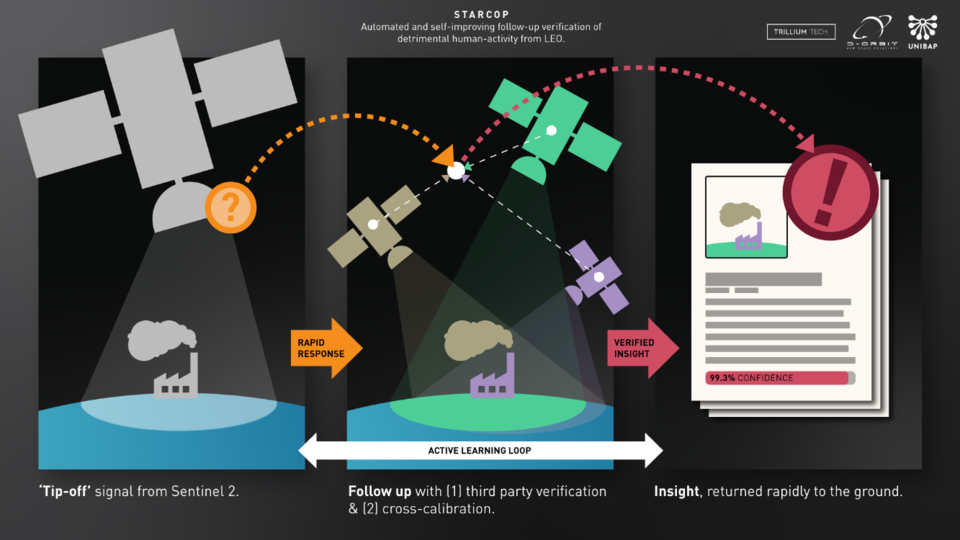
"In the recent 'Revolution Space' report, AI and cloud computing were identified as examples of where Europe has historically missed out on potential markets," explains Leopold Summerer, head of Advanced Concepts at ESA. "This set of activities marks a change, helping European companies to grow and prosper in an innovation-driven global ecosystem."
Funding from ESA Discovery gives companies – established and new, space and non-space – the opportunity to explore emerging fields even when they are not yet profitable. It allows them to experiment and take risks. It means that European companies can not only be ready for future space markets, but play a vital role in shaping them.
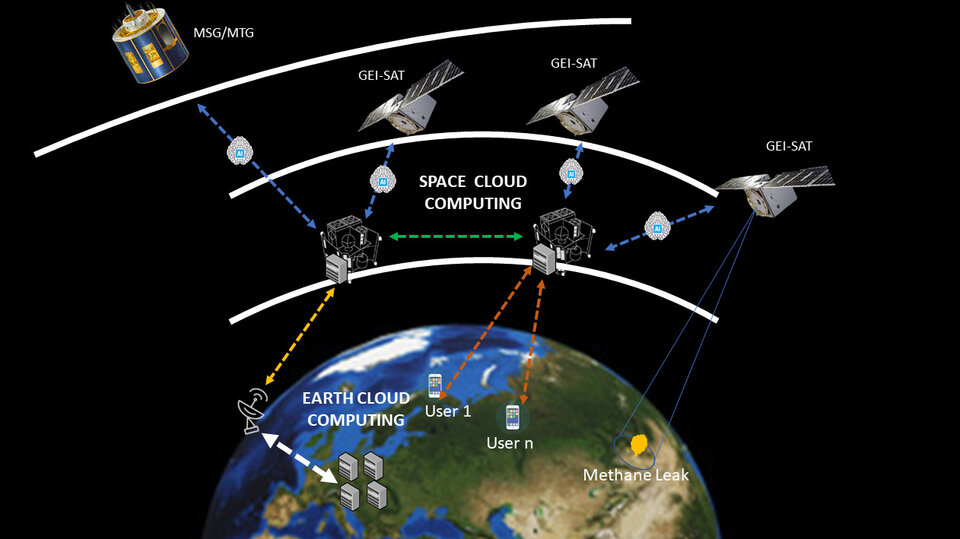
"The results of the activities suggest that smarter satellites could bring huge benefits, but this is just the first step," adds Gabriele. "For me, the next step is to increase the technology readiness levels of the various concepts, working on the first prototypes for ideas proposing new technologies and filling the technology gaps for those showing business potential."
It seems fitting that the final project presented during the meeting was called 'FRIENDS'. As the event ended, participants shared business cards and 'see you soon's. It will be exciting to see how collaborations and competitions ignited through these ESA-funded activities push forward the field of cognitive cloud computing in space.
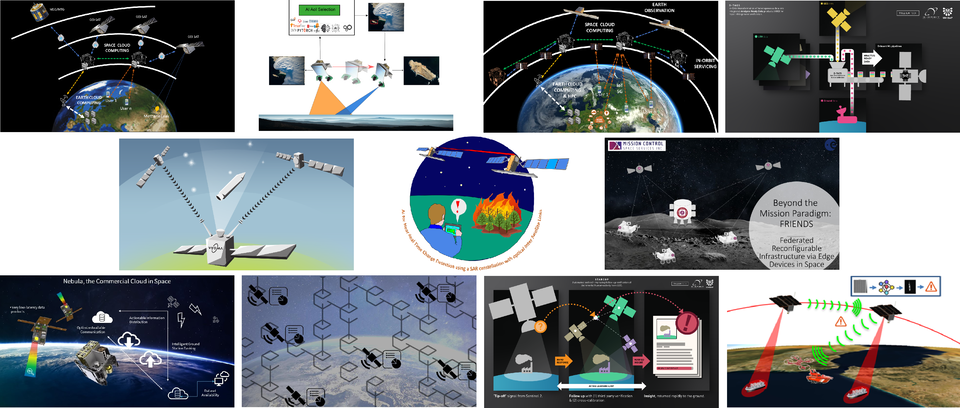
The call for ideas on 'cognitive cloud computing in space' was run through the Open Space Innovation Platform (OSIP) by the Discovery element of ESA's Basic Activities together with the Agency's Φ-lab and commercialisation department. Activities were funded by the Discovery element using the ESA Initial Support for Innovation (EISI) scheme; each ran for six months with a budget of 100 000 EUR.
Read descriptions of all the activities here.















 Germany
Germany
 Austria
Austria
 Belgium
Belgium
 Denmark
Denmark
 Spain
Spain
 Estonia
Estonia
 Finland
Finland
 France
France
 Greece
Greece
 Hungary
Hungary
 Ireland
Ireland
 Italy
Italy
 Luxembourg
Luxembourg
 Norway
Norway
 The Netherlands
The Netherlands
 Poland
Poland
 Portugal
Portugal
 Czechia
Czechia
 Romania
Romania
 United Kingdom
United Kingdom
 Slovenia
Slovenia
 Sweden
Sweden
 Switzerland
Switzerland




























